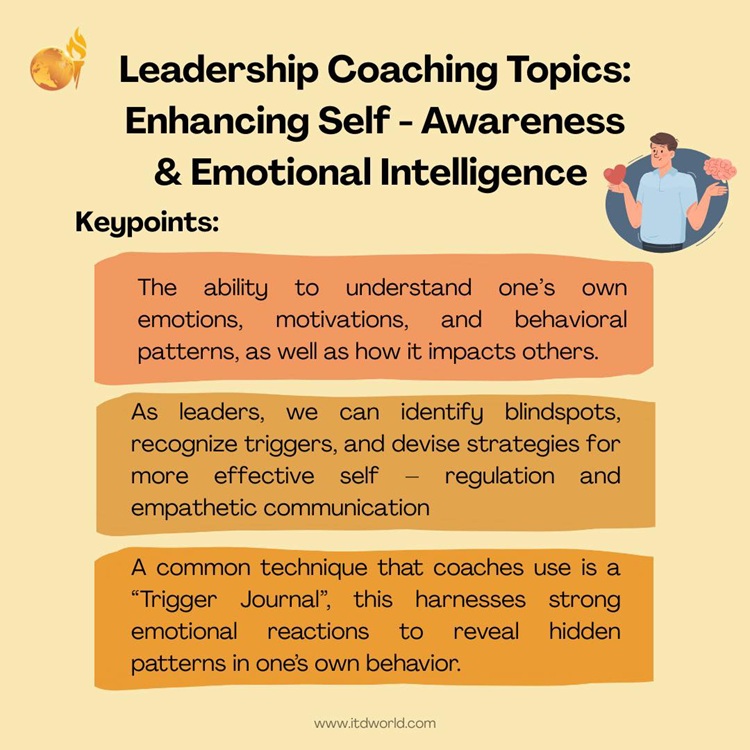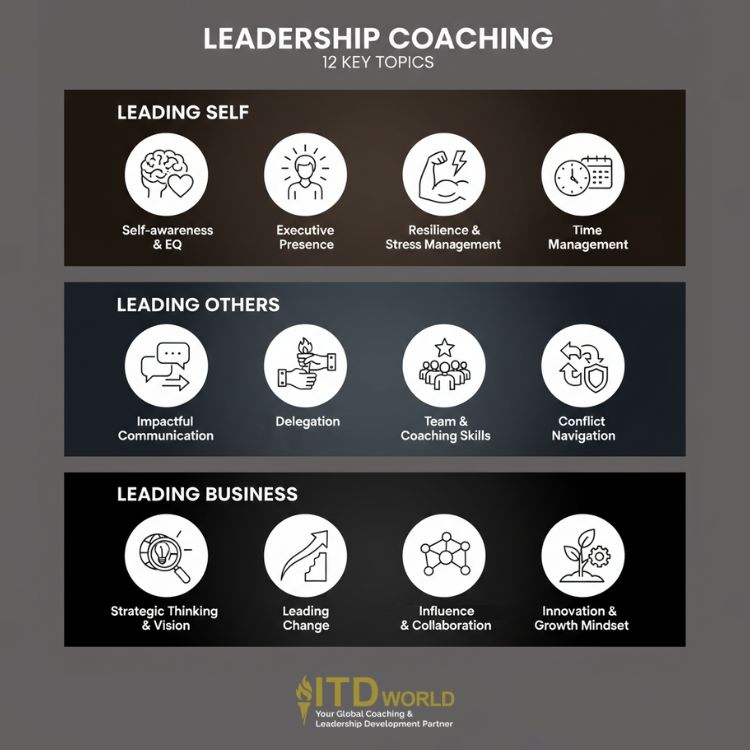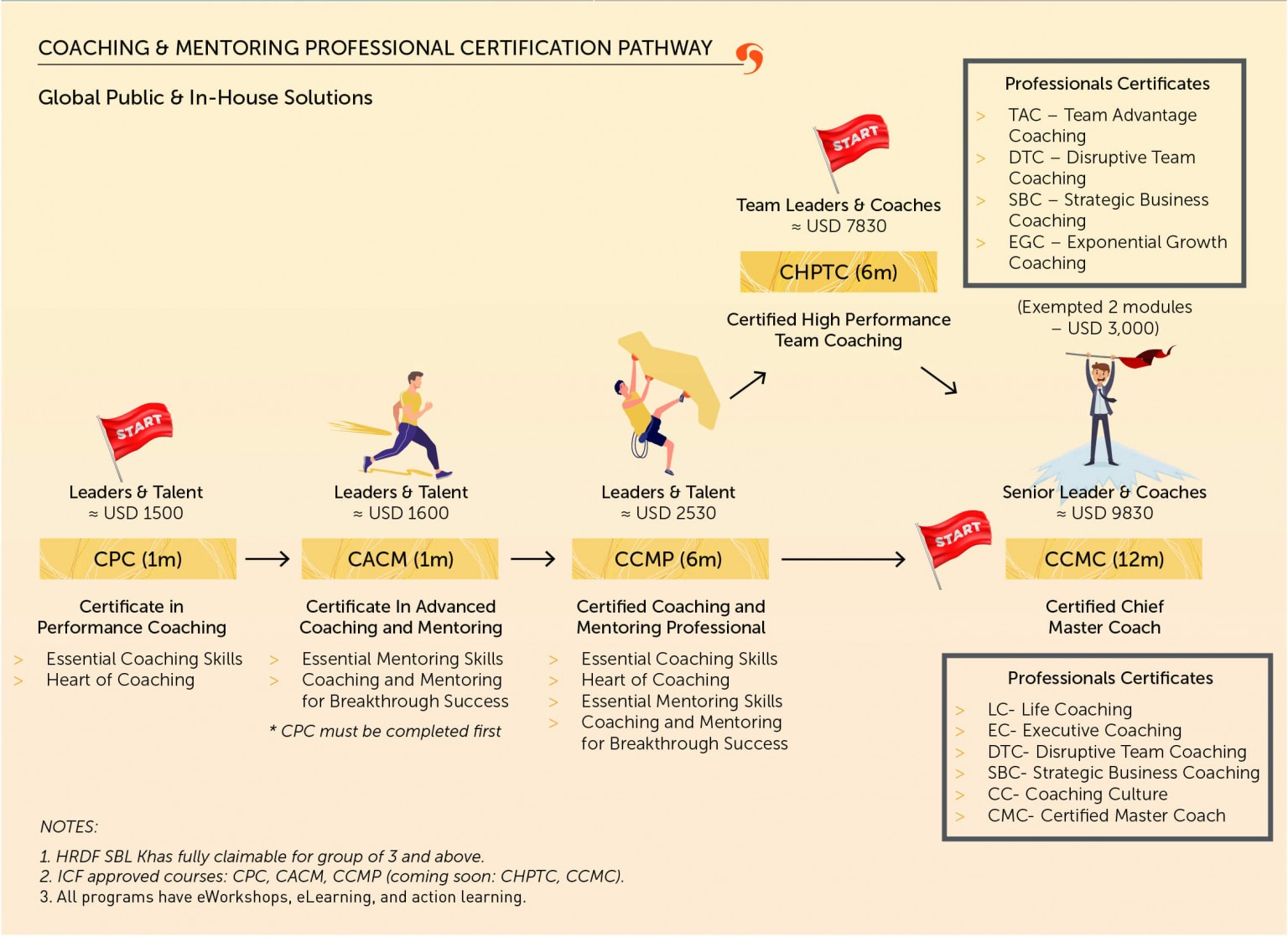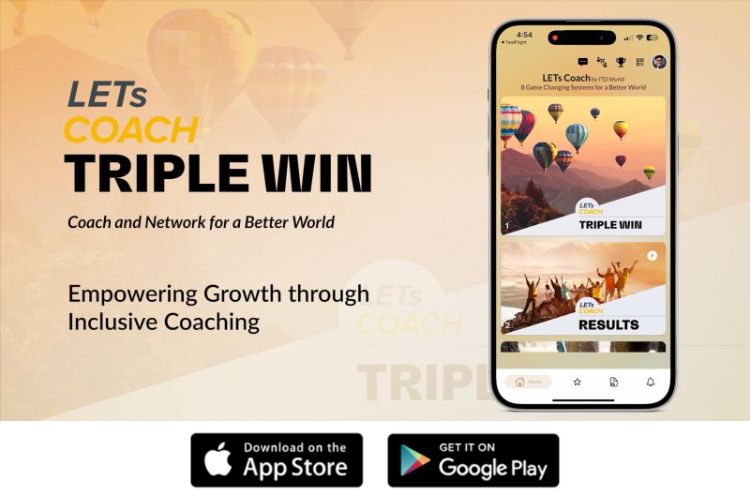An analysis of 12 key leadership coaching topics – from enhancing executive presence to leading through uncertainty – that drive transformation.
Many successful leaders eventually reach a point where they face a question: “I’ve gotten this far, but what do I need to do to unlock the next level of my performance and impact?” One-on-one coaching is one of the greatest solutions to answering that question. It is a strategic partnership designed not to fix weaknesses, but to amplify strengths and nurture the future-ready capabilities required for new and more complex challenges. Let us demystify the process by going over some of the most common and high-impact leadership coaching topics, shall we?
|
Author: Jonathan M. Pham |
Highlights
- Leadership coaching is vital for continuous growth in the business world. Through a process of self-discovery guided by a confidential thought partner, it helps accelerate development for leaders at all levels by improving decision-making, enhancing team performance, and increasing talent retention.
- To ensure successful leadership coaching, it is essential to choose a clear and relevant topic by reflecting on urgent current challenges, considering important future goals, and gathering objective external feedback to identify blind spots.
- Common leadership coaching topics are generally categorized into “Leading Self” (e.g. self-awareness, executive presence, resilience, time management), “Leading Others” (e.g., communication, delegation, team development, managing conflict), and “Leading the Business” (e.g., strategic thinking, change management, stakeholder influence, fostering innovation).
The Importance of Coaching in Leadership
Continuous growth is mandatory in today’s business world – especially for those in management positions. Leadership coaching provides one of the most effective methods for accelerating this growth, delivering tangible returns not only for the individual leader, but also for their team and the entire organization.
- Improved decision-making and strategic thinking: Coaching provides a dedicated, confidential space for participants to talk through complex challenges, resulting in clearer, more strategic, and better-informed decisions. The process also gives leaders a chance to strengthen their own identity and wellbeing – which translates to improved long-term effectiveness.
- Enhanced team performance: As leaders improve their own skills in areas like communication, delegation, and empathy through coaching, the performance, morale, and engagement of their entire team soar as a ripple effect.
- Higher retention of key talent: When an organization invests in a leader’s development, it sends a powerful message that they are valued. This sense of investment is a key driver of loyalty – and has been shown to significantly increase retention rates for high-potential employees.
It is crucial to understand that a leadership coach (also called an “executive coach”) is not a consultant who comes with answers, nor a therapist who primarily explores the past. They are meant to act as a confidential thought partner, whose role is to use a structured process of deep listening and open-ended questioning to help one:
- Cultivate greater self-awareness and identify blind spots.
- Challenge their own assumptions and learn to look at their situation from new perspectives.
- Unlock their own solutions and devise a clear, actionable path forward.
Coaching is not just for correcting poor performance or for the C-suite – but for individuals at all levels who are facing new challenges or are committed to realizing their full potential. These include:
- New managers learning to make the difficult transition from “doing” the work to “leading” others.
- Mid-career leaders looking to broaden their influence, navigate organizational politics, and prepare for more senior roles.
- Senior and C-suite executives facing high-stakes strategic decisions, leading large-scale change, or honing their executive presence.

Executive leadership coaching topics
How to Choose a Topic for Leadership Coaching
The success of a coaching engagement is typically determined before the first session even begins – by the clarity and relevance of the topic chosen. While a good coach can aid you in exploring any challenge, it is recommended that the partnership be anchored to a specific, high-leverage focus area.
To identify the most impactful leadership coaching topics, you can consider following this simple, three-step process.
- Reflect on the current challenges (the “Urgent”)
Start by looking at the present reality and determine a current pain point that is significantly hindering your or your team’s performance. Ask yourself: “What is the single biggest obstacle currently holding me back?” or “What is the most stressful or frustrating part of my leadership role right now?”
Example: “My team meetings are often unproductive and end without clear decisions, which is causing delays on our key projects.”
- Consider your future goals (the “Important”)
A great coaching topic not only solves a current problem – but also cultivates a critical capability for future success. As such, think about where you want to be in the next one to three years and ask yourself: “What new skills or mindsets will I need to be successful in the role I aspire to?” or “What is the biggest gap between the leader I am today and the one I aspire to become?”
Example: A leader might have a future goal of “being promoted to a senior role where I will need to lead larger, cross-functional teams” – which requires strong facilitation and strategic decision-making skills.
- Gather external feedback (the “Objective”)
Given that one’s self-perception is always incomplete, it is crucial that we identify our most critical blind spots and validate our own reflections based on objective data from those who work with us. This involves reviewing common themes from a recent 360-degree assessment, looking for patterns in one’s formal performance reviews, or asking for candid, specific input from a trusted manager or mentor.
Example: One’s 360-degree feedback might contain several comments like, “The leader tends to dominate conversations, and it’s often unclear what decision was made by the end of the meeting.”

C-level leadership coaching topics
The ideal coaching topic lies at the intersection of these three areas. In our example, the leader’s ideal coaching topic becomes clear: “To develop my meeting facilitation and decision-making skills to drive clearer outcomes, which will improve my current team’s performance and demonstrate my readiness for a more senior, cross-functional role.”
Read more: 10 Characteristics of a Good Coach
Leadership Coaching Topics: Leading Self
All effective leadership begins with self-mastery. Before one can guide their team with clarity and confidence, they must first do the foundational, internal work to manage themselves.
-
Enhancing self-awareness & emotional intelligence (EQ)
Knowing yourself is the beginning of all wisdom.
Aristotle
What it is: The ability to understand one’s own emotions, motivations, and behavioral patterns, as well as how one’s actions impact those around them.
What a coach can help: Identify one’s leadership blind spots, recognize emotional triggers, and devise strategies for more effective self-regulation and empathetic communication.
Sample question: “When you felt frustrated in that last meeting, what was the impact of that emotion on your team’s energy and willingness to contribute?”
Common techniques & activities: A coach might request that you keep a “trigger journal” for one week, noting situations that cause a strong emotional reaction. Reviewing this journal together is likely to reveal hidden patterns in your behavior.

-
Developing executive presence
No man or woman attains a top job, lands an extraordinary deal, or develops a significant following without this heady combination of confidence, poise, and authenticity that convinces the rest of us we’re in the presence of someone who’s the real deal.
Sylvia Ann Hewlett
What it is: Cultivating the gravitas, confidence, and communication style that signals credibility and inspires trust, especially when interacting with senior stakeholders or leading a large team.
What a coach can help: Refine one’s communication style to be more concise and impactful, improve body language, and learn to articulate one’s ideas with clarity and conviction, even under pressure.
Sample question: “In your next presentation to the board, what is the one key message you want them to remember about you as a leader?”
Common techniques & activities: Coaching for executive presence typically involves practice sessions with video feedback, allowing you to see yourself as others see you and make targeted improvements to your delivery.
Read more: Leadership Branding – Crafting an Inspiring Personal Identity
-
Building resilience & managing stress
The oak fought the wind and was broken, the willow bent when it must and survived.
Robert Jordan
What it is: The ability to navigate high-pressure situations, bounce forward from setbacks, and maintain one’s personal well-being to prevent leadership burnout.
What a coach can help: Realize one’s personal stress triggers, develop healthy and sustainable coping mechanisms, and adopt the habits (like mindfulness and boundary-setting) that protect one’s energy.
Sample question: “When you start to feel overwhelmed, what is one small, immediate action you can take to regain a sense of control and calm?”
Common techniques & activities: A coach might guide you through creating a “Personal Resilience Plan,” identifying your key support systems, stress-reducing activities, and the personal warning signs of impending burnout.
Read more: Resilience in the Workplace – Thriving in the Era of Crises
-
Improving time management & prioritization
What is important is seldom urgent and what is urgent is seldom important.
Dwight D. Eisenhower
What it is: More than coming up with simple to-do lists, it’s the strategic skill of allocating one’s most valuable and limited resource – i.e. time and attention – to the highest-impact activities.
What a coach can help: Distinguish between what is “urgent” and what is “important,” learn to delegate better, and set trasnparent boundaries to protect one’s time for deep, strategic work.
Sample question: “If you could only accomplish three things this week to truly move the needle on your most important goals, what would they be?”
Common techniques & activities: A powerful exercise is the “time audit.” For one week, you track exactly where your time goes. You and your coach then analyze the results to identify the gap between your stated priorities and how you actually spend your time.

Life coaching topics
Read more: Life Management – A Holistic Guide
Leadership Coaching Topics: Leading Others
Once a strong foundation of self-mastery has been established, the focus should shift to the interpersonal skills required to engage and develop a high-performing team. In other words, it is about moving from “I” to “we.”
-
Communicating with impact & influence
The art of communication is the language of leadership.
James Humes
What it is: This goes beyond just clarity. It is the ability to communicate in a way that inspires action, promotes trust, and aligns the team around a shared vision. As such, it requires the ability to tailor one’s message to different audiences to ensure it is not just heard, but felt.
What a coach can help: Craft key messages more effectively, adapt one’s communication style (e.g., for the team vs. for senior executives), and use storytelling to make one’s vision more compelling and memorable.
Sample question: “What is the single most important feeling you want your team to have after you finish speaking at the next all-hands meeting?”
Common techniques & activities: A coach might utilize a “message-crafting canvas” where you map out your audience, core message, the desired outcome, and potential objections before an important communication, ensuring the message is strategic and impactful.
Read more: Leading With Impact – Translating Your Presence Into Performance
-
Mastering delegation & empowerment
A leader who is self-aware enough to know that he or she is not adept at everything is one who has taken the first step toward being a great leader.
What it is: The critical, yet challenging skill of transitioning from being the primary “doer” to entrusting one’s team with true ownership and authority over their work.
What a coach can help: Identify which tasks only you can do, overcome the personal fear of “letting go,” and learn how to delegate desired outcomes instead of just assigning tasks.
Sample question: “What is a current project that feels ‘stuck on your plate’ that could be a growth opportunity for someone on your team if you were to hand it over?”
Common techniques & activities: One amazing exercise is to create a “delegation matrix,” mapping out all your current tasks on two axes: “Tasks that give me energy vs. drain my energy” and “Tasks only I can do vs. tasks others could do.” This visually reveals the best opportunities for delegation.
Read more: Ego in the Workplace – The Hidden ‘Evil’ Behind Team Dysfunctions
-
Developing your team & coaching skills
A man who wants to lead the orchestra must turn his back on the crowd.
Max Lucado
What it is: Becoming a “talent multiplier” – one who sees their primary role as growing the capabilities of their team members. This involves adopting a coaching mindset in daily interactions.
What a coach can help: Transform one’s one-on-one meetings from status updates into powerful developmental conversations, learn a simple coaching model (like GROW), and identify unique growth opportunities for each person on the team.
Sample question: “How could you reframe your next one-on-one to be 80% about your team member’s growth and only 20% about your need for a status update?”
Common techniques & activities: Role-playing is highly effective here. You and your coach can role-play a feedback conversation with one of your direct reports, so as to practice your coaching skills in a safe, supportive environment.
Read more: Mastering the Situational Coaching Model (SCM)
-
Navigating difficult conversations & conflict
A ‘No’ uttered from the deepest conviction is better than a ‘Yes’ merely uttered to please, or worse, to avoid trouble.
Mahatma Gandhi
What it is: The ability to address sensitive issues – such as underperformance, interpersonal conflict between team members, or delivering bad news – in a way that is direct, respectful, and constructive.
What a coach can help: Prepare for high-stakes conversations by clarifying one’s goal, manage one’s own inner states during a conflict, and leverage proven frameworks to structure the conversation for a productive outcome.
Sample question: “What is the most positive, mutually beneficial outcome you can imagine for this conversation?”
Common techniques & activities: A coach will often help a leader script and practice the opening lines of a difficult conversation. Mastering how you will begin – calmly stating the facts and your positive intent – can dramatically reduce anxiety and set the stage for a more fruitful dialogue.
Read more: Intent vs Impact in the Workplace – How to Close the Gap

Personal development coaching topics
Leadership Coaching Topics: Leading the Business
The final domain focuses on elevating one’s perspective from functional management to enterprise-level contribution. The following leadership coaching topics are about seeing the bigger picture, navigating complexity, and driving results that move the entire organization forward.
-
Strengthening strategic thinking & vision
Strategy without tactics is the slowest route to victory. Tactics without strategy is the noise before defeat.
Sun Tzu
What it is: The ability to rise above day-to-day operations to truly know market trends, see the competitive landscape, and define a compelling vision for the future of one’s team or department that aligns with the overall company strategy.
What a coach can help: Carve out protected time for strategic thinking, analyze business challenges from multiple altitudes, and learn to articulate a vision that deeply motivates the team.
Sample question: “If you were the CEO looking at your department, what is the single most strategic contribution your team could make in the next year?”
Common techniques & activities: Conducting a simple SWOT analysis (Strengths, Weaknesses, Opportunities, Threats) for your team or function, and then drafting a one-page strategic vision statement based on that analysis.
-
Leading through change & uncertainty
The true test of leadership is how well you function in a crisis.
What it is: A critical modern capability to guide a team effectively through organizational restructures, new technology implementations, market disruptions, or any period of ambiguity with clarity, confidence, and empathy.
What a coach can help: Develop a clear communication plan for any change initiative, manage one’s own and their followers’ emotional responses to uncertainty, and keep the whole team focused and motivated during turbulent times.
Sample question: “What is the one thing your team needs to hear from you right now to feel a sense of stability?”
Common techniques & activities: A coach can work with you to come up with a “Change Communication Plan,” mapping out all your key stakeholders and tailoring specific messages and communication frequencies for each group to minimize anxiety and maximize buy-in.
Read more: Agility Coaching – Navigating Change & Fueling Business Success

Business coaching topics
-
Influencing stakeholders & driving collaboration
If you want to go fast, go alone. If you want to go far, go together.
African Proverb
What it is: The ability to form alliances and win support from people outside of your direct line of authority, such as peers in other departments, senior executives, or external partners.
What a coach can help: Identify one’s key stakeholders, understand their motivations and priorities, and brainstorm strategies to influence them effectively and foster strong, collaborative relationships that break down organizational silos.
Sample question: “From your key stakeholder’s perspective, what is their biggest priority, and how does your project directly enable them to achieve it?”
Common techniques & activities: A powerful coaching tool is stakeholder mapping. You and your coach would create a visual map of all key stakeholders based on their level of influence and interest, so that you may better prioritize your time and communication efforts strategically.
-
Fostering innovation & a growth mindset
I have not failed. I’ve just found 10,000 ways that won’t work.
Thomas A. Edison
What it is: Creating an environment where the team feels psychologically safe to challenge the status quo, experiment with new ideas, and learn from failure. It’s about future-proofing one’s team by establishing a culture of continuous learning & improvement.
What a coach can help: Determine and remove the cultural barriers to innovation on one’s team, learn how to facilitate better brainstorming sessions, and model the vulnerability required to encourage smart risk-taking.
Sample question: “What is one process or assumption on our team that we treat as ‘sacred,’ but that might be holding us back from innovating?”
Common techniques & activities: A coach might challenge you to implement a “blameless post-mortem” or an “after-action review” for a recent project. This involves analyzing what went wrong without assigning fault, focusing purely on the lessons learned to contribute to a culture where it’s safe to try and fail.
Read more: Executive Leadership – A Guide to Developing Tomorrow’s Titans

Discover ITD World’s Leadership Coaching & Training Solutions
The 12 leadership coaching topics explored above represent a comprehensive curriculum for modern leadership excellence. While self-study is a great start, the most sustainable way to achieve true mastery and lasting behavioral change is typically through a dedicated partnership with certified experts. Professional coaching and training provide the structure, accountability, and objective feedback needed to accelerate one’s journey.
ITD World’s training and coaching services are designed to enable participants to acquire the specific capabilities needed to thrive in today’s complex business environment, covering all the topics discussed in this guide. Our suite of ICF-accredited and globally recognized solutions include:
- One-on-one executive coaching: For a deeply personalized development experience, our world-class coaches will partner with you to tackle your most pressing challenges – from enhancing executive presence to leading through change.
- Leadership training programs: Our targeted workshops address practical tools and frameworks to cultivate specific skills in areas like strategic thinking, communication, and team development.
- Coach certification programs: For leaders and organizations committed to establishing a coaching culture, our Certified Coaching & Mentoring Professional (CCMP) and Certified Chief Master Coach (CCMC) programs equip your people with the competencies to grow others effectively.
Ready to unlock your next level of performance? Contact ITD World today to learn more about our leadership coaching and training solutions – and to find the right path forward for you!
Other resources you might be interested in:
- 43 Leadership Coaching Quotes to Empower Success
- 10 Common Coaching Challenges: Navigating Difficult Scenarios
- Coaching Philosophy: How to Craft One That Defines Your Impact
- 7 Types of Coaching in the Workplace: A Practical Guide
- Self-coaching: A Practical Guide to Being Your Own Coach



